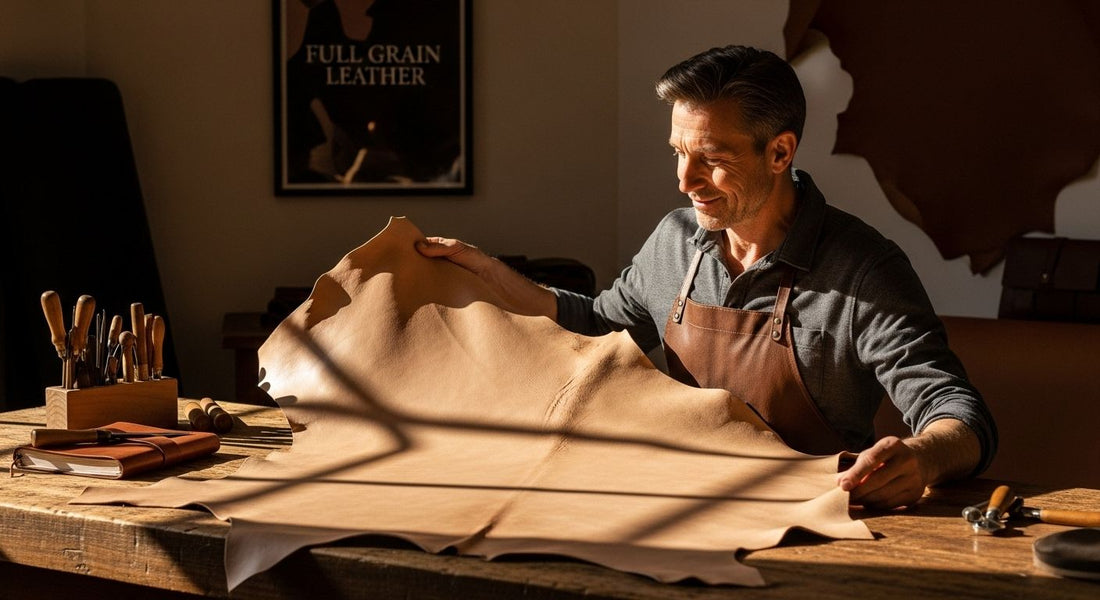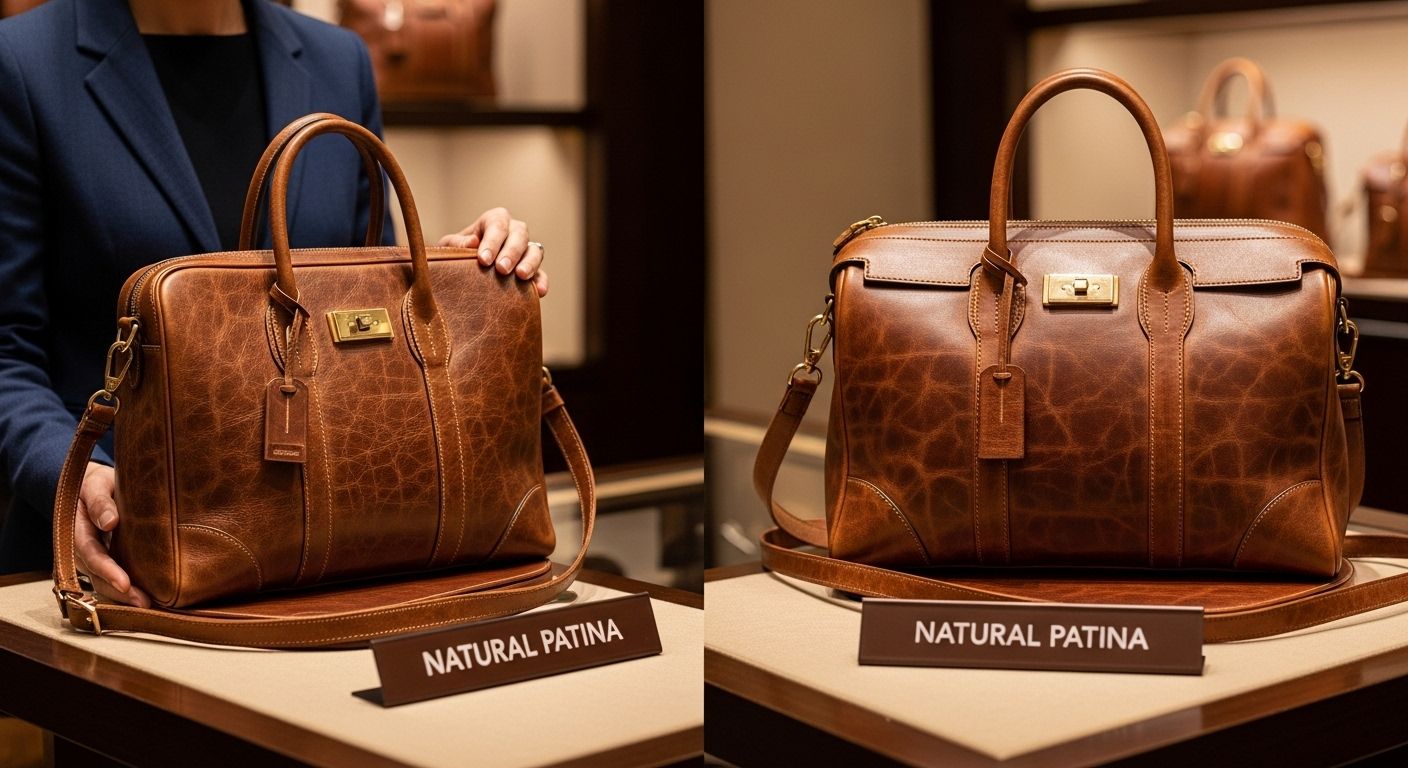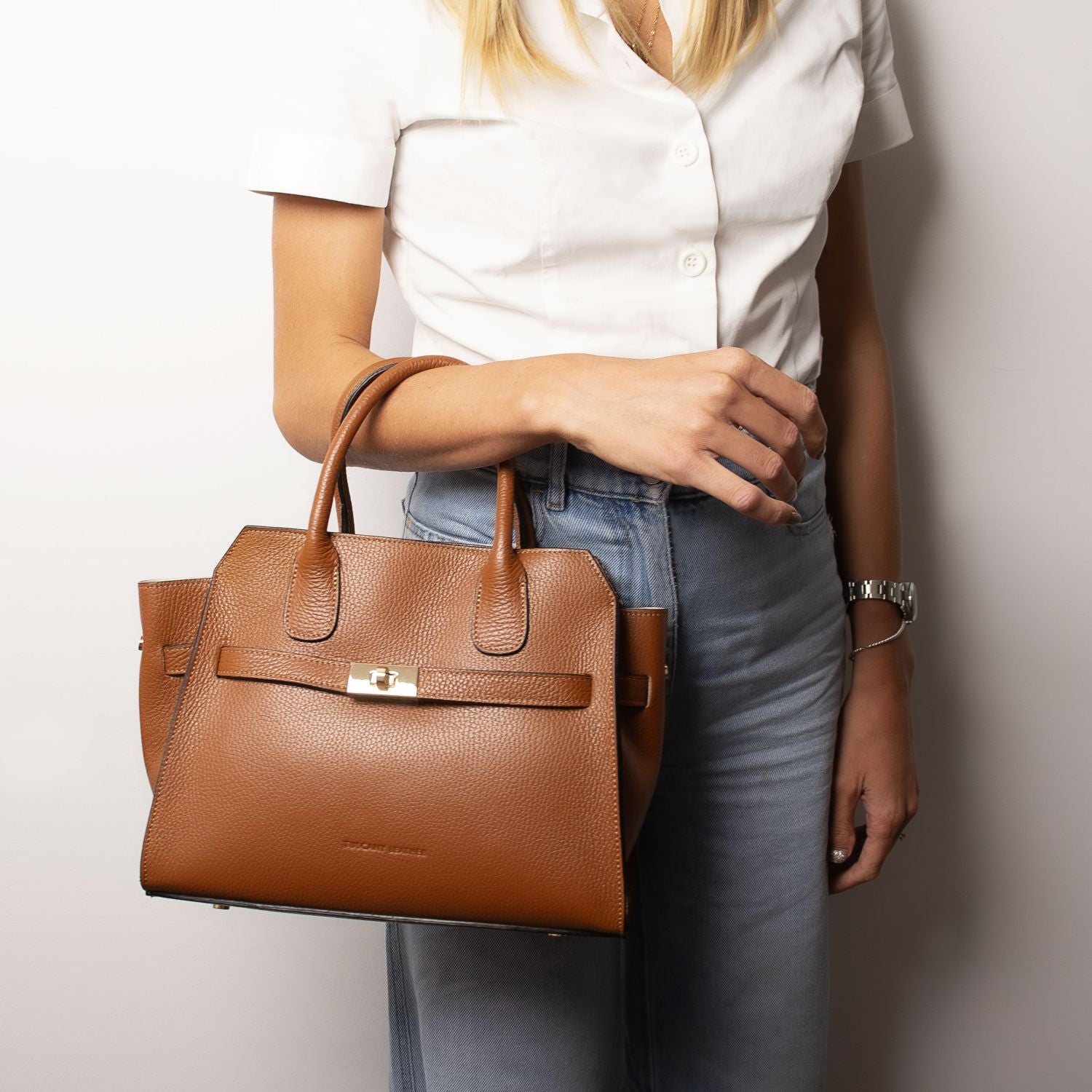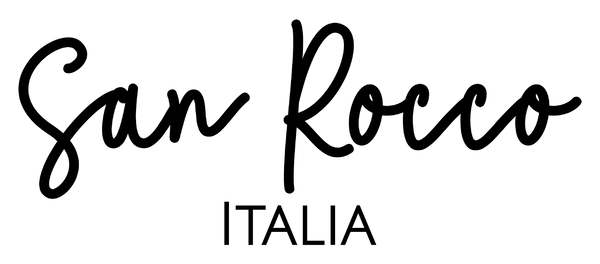
What is Full Grain Leather? Understanding Its Beauty
Share
Full grain leather often sits at the top of every leather lover’s wish list. Its reputation for luxury and strength draws the attention of anyone after quality, but most people have no idea what makes it so special. The truth is, full grain leather can last for decades and actually looks better as it ages, making it a rare material that improves with every year of use.
Table of Contents
- Defining Full Grain Leather: What Is It Really?
- The Importance Of Full Grain Leather In Luxury Fashion
- How Full Grain Leather Is Made: The Process Explained
- Key Characteristics Of Full Grain Leather You Should Know
- Why Full Grain Leather Matters For Sustainability And Quality
Quick Summary
| Takeaway | Explanation |
|---|---|
| Full grain leather is the highest quality | It represents the most authentic leather, made from the top layer of hides with minimal processing. |
| It develops a unique patina over time | Full grain leather ages gracefully, enhancing its aesthetic character and making each piece unique. |
| Sustainable luxury choice | The durability of full grain leather promotes a longer product lifecycle, aligning with sustainable fashion principles. |
| Minimal processing retains natural features | Full grain leather preserves the hide’s original marks and texture, embodying authentic craftsmanship and quality. |
| Breathable and comfortable material | Its natural porous structure allows moisture absorption, providing comfort in various applications like footwear and furniture. |
Defining Full Grain Leather: What Is It Really?
Full grain leather represents the highest quality and most authentic leather available in the crafting world. When exploring what is full grain leather, understanding its unique characteristics becomes crucial for discerning consumers and leather enthusiasts.
The Purest Form of Leather
According to Leather Naturally, full grain leather is defined as leather made from the top layer of an animal hide, which includes all of the natural grain with minimal processing. This means the surface remains unaltered, preserving the hide’s most robust and resilient layer.
Key characteristics of full grain leather include:
- Maintains the entire natural surface of the hide
- Displays unique markings and imperfections
- Develops a rich patina over time
- Demonstrates superior durability and strength
Natural Beauty and Uncompromised Quality
Unlike other leather types that are sanded or corrected, full grain leather retains the complete outer layer of the skin. This preservation ensures maximum strength and an authentic aesthetic that tells a genuine story. The surface includes all natural marks, scars, and variations, which are not removed or artificially masked.
The Royal Society of Chemistry describes the grain layer as “the outer layer of the hide or skin, the more valuable part comprising the corium minor and the enamel outer surface.” This technical description underscores why full grain leather is considered the premium choice for high-end leather goods.
Consumers seeking authentic, long-lasting leather products will find full grain leather offers unparalleled quality. Its ability to age gracefully, developing a unique character with use, sets it apart from other leather grades. The investment in a full grain leather item is not just a purchase but an acquisition of a piece that will potentially last decades, improving in appearance and structural integrity over time.
The Importance of Full Grain Leather in Luxury Fashion
Luxury fashion is intrinsically linked with superior materials, and full grain leather represents the pinnacle of quality, durability, and aesthetic sophistication. Understanding its significance reveals why discerning designers and consumers consistently choose this exceptional material.
A Mark of Authentic Craftsmanship
According to Best Leather, full grain leather is distinguished by its unparalleled quality and natural characteristics. In luxury fashion, this material serves as a hallmark of authentic craftsmanship, communicating excellence through its inherent properties.
Key attributes that elevate full grain leather in luxury fashion include:
- Exceptional durability and longevity
- Natural, unaltered surface texture
- Ability to develop a unique patina over time
- Superior moisture resistance
- Reflects meticulous artisanal production standards
Sustainable Luxury and Aesthetic Appeal
Full grain leather transcends mere functionality, embodying a profound narrative of sustainability and refined elegance. Its preservation of the hide’s natural surface ensures each piece tells a distinctive story, with unique markings and textures that synthetic materials cannot replicate.
Research published in Scientific Reports emphasizes the importance of sustainable production processes in leather manufacturing. In luxury fashion, this translates to a commitment to quality that goes beyond aesthetic appeal, representing an investment in environmental responsibility and timeless design.
Luxury brands recognise that full grain leather is more than a material choice it is a statement of values. The leather’s ability to age gracefully, developing a rich character with use, mirrors the philosophy of slow fashion: creating pieces that are cherished, maintained, and passed down through generations. This approach challenges the disposable fashion culture, positioning full grain leather as a symbol of conscious consumption and enduring style.
How Full Grain Leather Is Made: The Process Explained
The creation of full grain leather is a sophisticated, multi-stage process that transforms raw animal hides into exceptional, durable material. Understanding this intricate journey reveals the remarkable craftsmanship behind every full grain leather product.
Preparing the Hide
According to Leather Naturally, the leather-making process begins with the critical ‘beamhouse’ stage. This initial phase involves comprehensive preparation of the raw hide, which includes several crucial steps:
- Removing preserving salts and dirt
- Cleaning and preparing the hide surface
- Adjusting hide thickness through precision splitting
- Eliminating flesh and unwanted tissue layers
Tanning: Transforming Raw Material
Tanning represents the most crucial transformation in leather production. This complex chemical process stabilises the protein structure, preventing decomposition and creating leather’s fundamental characteristics. Infonet Biovision highlights two primary tanning methods: chrome-based and vegetable tanning.
Vegetable tanning, using plant-derived extracts, preserves the hide’s natural texture and allows full grain leather to develop its distinctive patina. Chrome-based tanning offers faster processing and enhanced flexibility. For full grain leather, the goal is minimal intervention, ensuring the hide’s natural grain remains intact and unaltered.
The final stages involve meticulous finishing techniques that enhance the leather’s appearance and performance. Artisans carefully mill and condition the leather, maintaining its inherent strength and natural beauty. This dedication to preserving the hide’s original characteristics ensures that full grain leather remains the pinnacle of quality, reflecting both traditional craftsmanship and modern manufacturing precision.
Key Characteristics of Full Grain Leather You Should Know
Full grain leather represents a pinnacle of quality and authenticity, distinguished by unique properties that set it apart from other leather grades. Understanding these characteristics helps consumers appreciate its exceptional value and remarkable performance.
Natural Surface and Structural Integrity
According to Leather Research Laboratory, full grain leather is defined by its unaltered grain surface, retaining the complete original hide structure. This preservation ensures maximum fiber strength and remarkable durability.
Key characteristics that define full grain leather include:
- Retains entire original hide surface
- Displays natural markings and imperfections
- Contains dense, unbroken fiber networks
- Demonstrates superior tensile strength
- Resists moisture and environmental degradation
Breathability and Performance
Leather Naturally highlights the exceptional breathability of full grain leather. Unlike processed leather types, its natural porous structure allows moisture absorption and release, creating a material that adapts to environmental conditions and user comfort.
This unique breathability translates into practical benefits across various applications. Whether used in luxury handbags, professional footwear, or high-end furniture, full grain leather maintains its structural integrity while providing unparalleled comfort and performance. The material’s ability to develop a rich patina over time further enhances its aesthetic appeal, transforming each piece into a personalised, living artifact that tells a unique story of use and refinement.
The following table provides an overview of the key characteristics that define full grain leather, helping readers quickly understand its unique features:
| Characteristic | Description |
|---|---|
| Natural Surface | Retains the original grain, including unique markings |
| Durability | Exceptionally strong due to unbroken fibre structure |
| Breathability | Highly breathable, allowing for moisture absorption |
| Patina Development | Ages beautifully, developing a unique character |
| Moisture Resistance | Better resistance to moisture and environmental damage |
| Minimal Processing | Undergoes little alteration, preserving authentic texture |

Why Full Grain Leather Matters for Sustainability and Quality
In an era of increasing environmental consciousness, full grain leather emerges as a sustainable material that bridges traditional craftsmanship with ecological responsibility. Understanding its environmental impact reveals how premium leather production can align with contemporary sustainability goals.
Environmentally Conscious Production
Research published in Polymers highlights the critical importance of sustainable leather manufacturing processes. By focusing on bio-based finishing techniques and environmentally responsible production methods, full grain leather represents a more thoughtful approach to material creation.
Key sustainable advantages of full grain leather include:
- Utilises the entire hide with minimal waste
- Reduces manufacturing chemical interventions
- Promotes longer product lifecycle
- Supports traditional artisanal manufacturing techniques
- Enables circular economy principles through durability
Quality as a Sustainability Strategy
Full grain leather’s inherent durability transforms sustainability from a concept into a tangible practice. Unlike synthetic materials that quickly degrade, these leather products can last decades, significantly reducing consumption and waste. The material’s ability to develop a rich patina means that each item becomes more aesthetically interesting with age, challenging the disposable fashion model.
Chrome-free tanning methods, as noted in Collagen and Leather, further enhance the environmental credentials of full grain leather. By minimising harmful chemical treatments and prioritising natural processing techniques, manufacturers can create high-quality leather that respects both environmental standards and artisanal traditions. This approach represents a sophisticated response to modern sustainability challenges, proving that luxury and ecological responsibility can coexist harmoniously.
Experience Genuine Excellence with Full Grain Leather at San Rocco Italia
Have you ever admired the rich texture and durability described in discussions about full grain leather, only to feel disappointed when your own accessories fail to age gracefully or lose their character over time? The article has highlighted a common frustration: finding truly authentic leather goods that not only look beautiful but also improve with each passing year. If you seek timeless elegance, strength, and the unique patina that only full grain leather can deliver, the search is over.

Discover what authentic craftsmanship looks and feels like by exploring our collection at San Rocco Italia. Every handbag and accessory is meticulously handmade in Italy from premium full grain leather, preserving the natural grain, texture, and individuality that make each piece a story in itself. Step away from mass-produced compromises and choose something extraordinary. Visit San Rocco Italia now to experience the beauty and lasting value of genuine full grain leather. Your next heirloom-worthy accessory awaits—embrace timeless style today.
Frequently Asked Questions
What is full grain leather?
Full grain leather is the highest quality leather made from the top layer of an animal hide, preserving its natural grain, markings, and strength.
What are the benefits of full grain leather?
Full grain leather offers superior durability, develops a unique patina over time, retains its natural surface, and is more resistant to moisture and wear compared to other leather types.
How does full grain leather differ from other types of leather?
Unlike top grain or corrected grain leather, full grain leather maintains the complete original surface of the hide, displaying unique imperfections and requiring minimal processing, which contributes to its strength and authenticity.
To clarify the main differences between full grain leather and other common types, the following comparison table summarises their defining features as mentioned in the article:
| Leather Type | Surface Treatment | Strength & Durability | Natural Markings Retained | Develops Patina Over Time |
|---|---|---|---|---|
| Full Grain Leather | Minimal (unaltered) | Superior | Yes | Yes |
| Top Grain Leather | Sanded/corrected | Moderate | Often removed | Limited |
| Corrected Grain Leather | Heavily sanded/finished | Lower | No | Rare |
| Synthetic Leather | Artificial | Low | Imitation | No |
Is full grain leather a sustainable choice?
Yes, full grain leather is considered sustainable as it utilises the entire hide, reduces chemical interventions in production, and offers a longer product lifecycle, thereby promoting eco-friendly consumption practices.
Recommended
- Origin of Full Grain Leather Archives - Maker of Jacket


